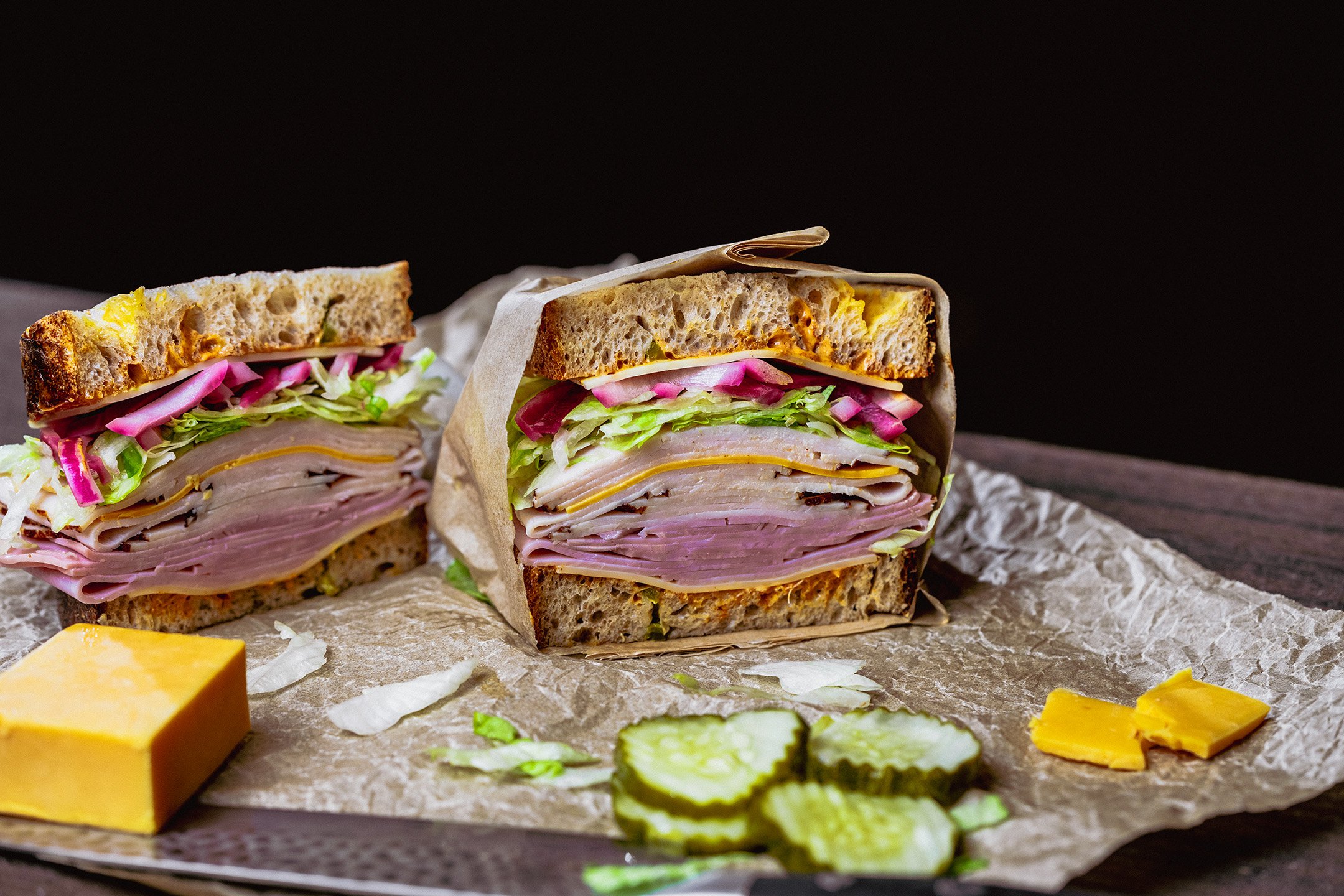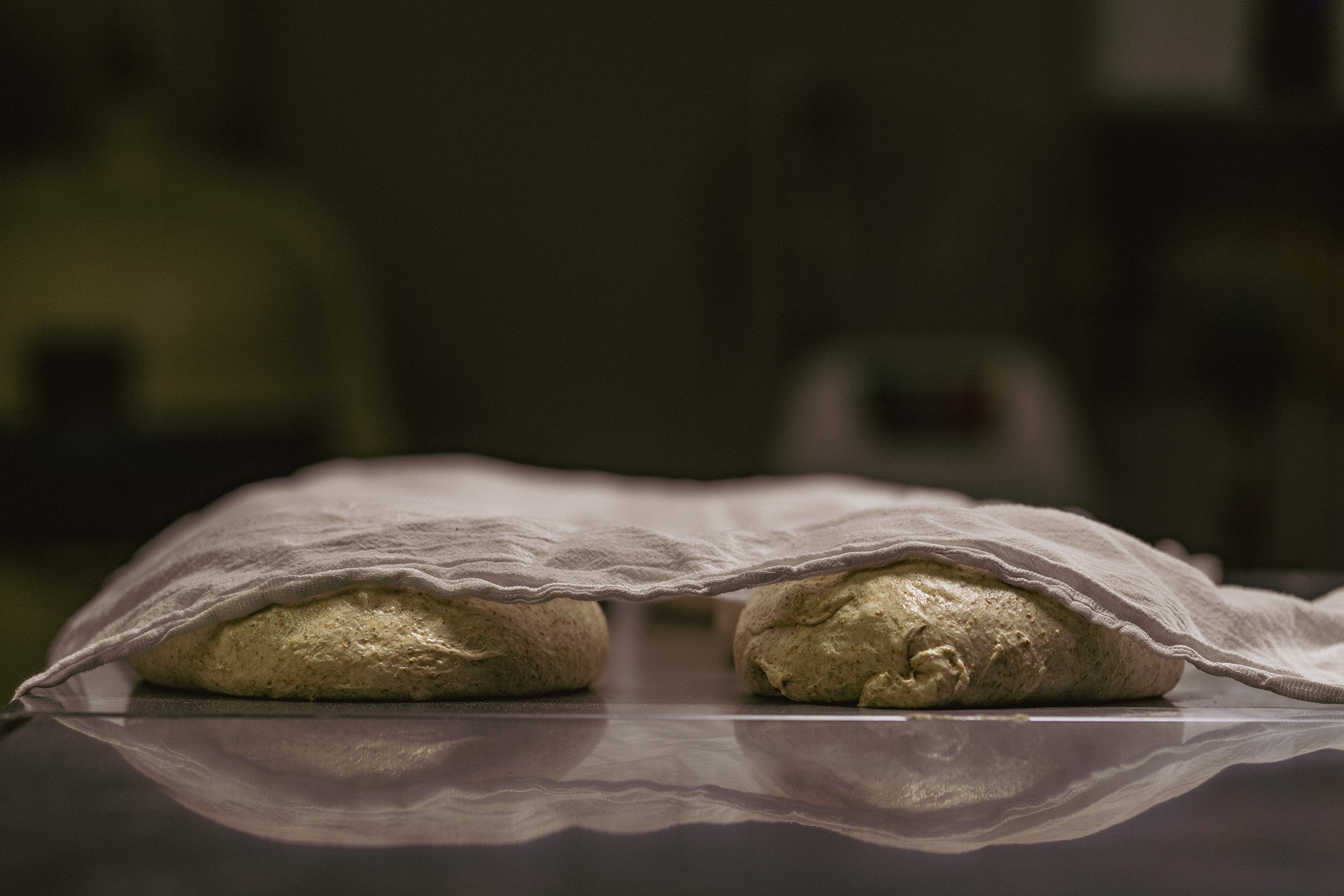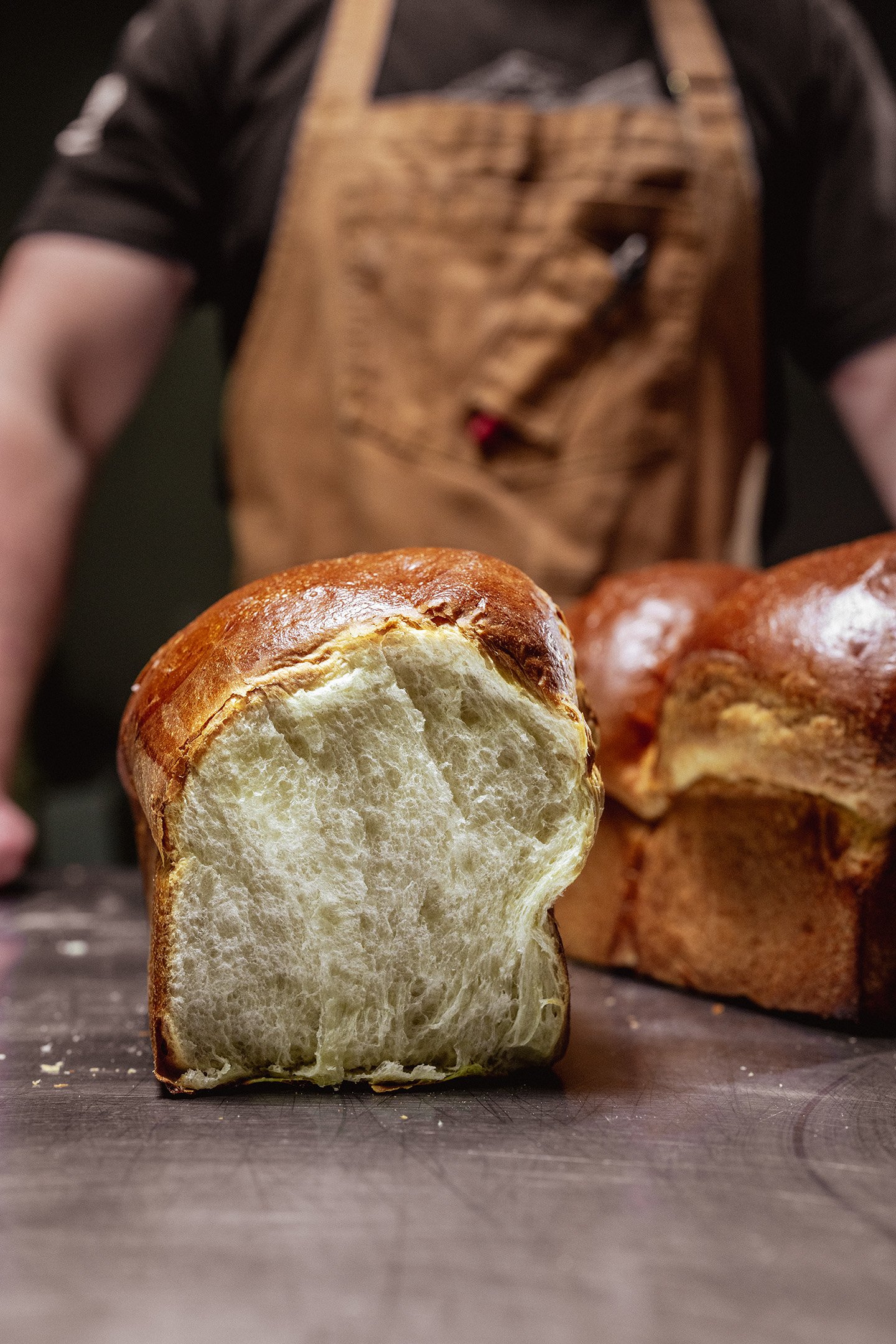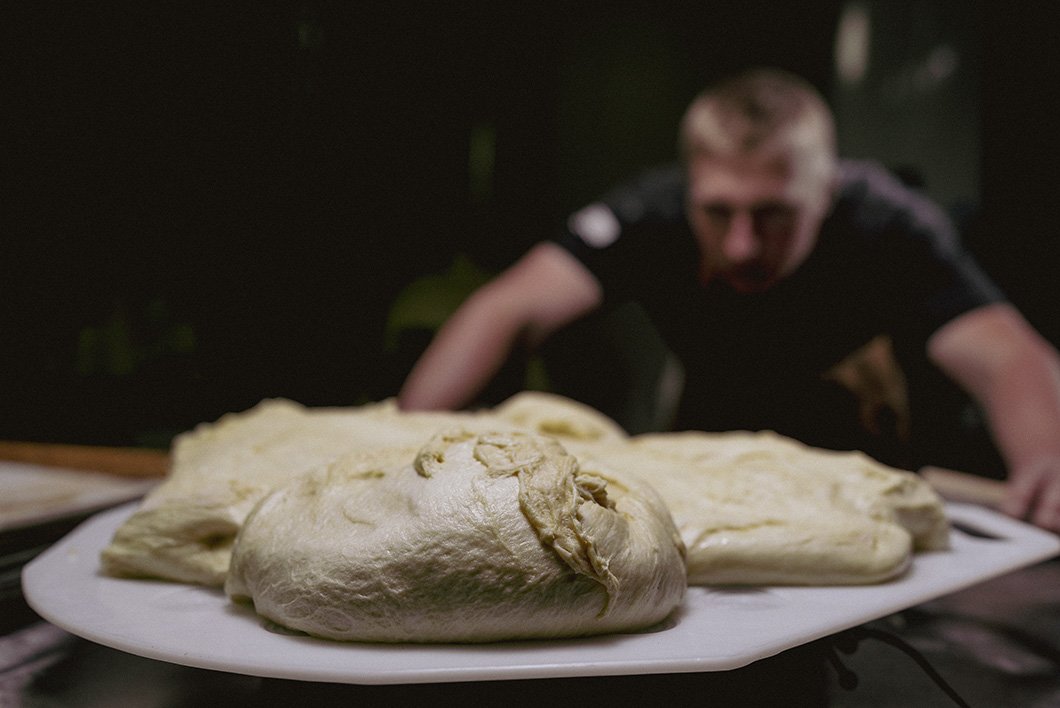A Complete Guide To American Breads
A Practical Reference
Introduction
Bread is a cornerstone of dining experiences. It can make or break a sandwich. The right bread can elevate a menu, complement a dish, and become a signature element of your brand. This guide is a practical tool for selecting breads based on functionality—simply select what your trying to accomplish to explore the possibilities.
How to use this guide:
This guide categorizes breads by their functional roles in professional kitchens. Instead of focusing solely on type or origin, we’ve organized breads by their best applications. For example, some excel as sandwich bases, while others shine as table accompaniments or toast foundations. Each bread’s texture, crumb, flavor, and structure inform its ideal use. Simply select the category to unlock ideas for further usage.
Within each category, you’ll find:
Bread Profiles: Key characteristics like flavor, crumb, and structure.
Applications: Practical and creative uses to inspire your menu.
Tips for Use: Handling, storage, and preparation insights.
While focusing on breads common in the United States, this guide encourages creativity. Bread’s versatility lies in its treatment: a loaf of sourdough, for instance, can serve as grilled cheese, table bread, or croutons. Let this resource help you unlock bread’s full potential in your kitchen.
Category 1: Sandwich Foundations
Sandwiches are a staple of American cuisine, and the bread you choose determines the experience. The ideal sandwich bread provides structure, enhances flavor, and complements the filling.
Bread Profiles
Sourdough: Robust flavor with a chewy crumb and crisp crust, perfect for artisanal sandwiches or grilled applications.
Ciabatta: Light, airy crumb with a thin, crispy crust, ideal for paninis or sandwiches with hearty fillings.
Rye: Dense crumb and earthy flavor, often paired with cured meats and strong cheeses.
Brioche: Buttery, soft, and slightly sweet, best for elevated or dessert-inspired sandwiches.
Focaccia: Richly flavored with olive oil and herbs, its spongy crumb makes it ideal for thick, rustic sandwiches or as a base for open-faced creations.
Applications
Classic Sandwiches: Use sourdough or rye for deli-style classics like turkey clubs or Reubens.
Hot Sandwiches: Ciabatta excels in pressed or toasted options, such as paninis or steak sandwiches.
Breakfast Sandwiches: Brioche offers a rich, indulgent base for egg and cheese combinations.
Submarines and Hoagies: Focaccia or Italian rolls provide structure for hearty, long-form sandwiches like meatball subs or cold-cut hoagies.
Innovative Pairings: Experiment with flavor contrasts, like pairing sourdough with spicy fillings or brioche with savory elements.
Category 2: Burger, Slider, Chicken, and Fish Sandwich
Texture and support, while enhancing the overall flavor profile, are crucial for this category. Each bread should balance softness, structure, and subtle flavor to complement the protein, whether it’s beef, chicken, or fish.
While burgers and sliders tend to lean on rich, soft, and slightly sweet breads, chicken and fish sandwiches might require breads that highlight the lightness of their fillings while still providing enough structure to handle sauces and toppings.
Bread Profiles:
Brioche: Rich and buttery with a soft crumb and slight sweetness. Ideal for burgers and fried chicken sandwiches, as it elevates the flavors and complements crispy textures.
Potato Rolls: Soft yet sturdy, with a slightly savory flavor. Excellent for saucy chicken or fish sandwiches and hearty burgers.
Milk Buns: Light and slightly sweet, these versatile buns balance well with burgers, chicken, or fish, offering a tender yet supportive base for fillings and toppings.
Japanese Milk Buns: Exceptionally soft with a smooth crumb, these slightly sweet buns provide a luxurious base for burgers, sliders, or chicken sandwiches.
Sesame Seed Buns: Soft buns with a light crunch and nutty flavor from sesame seeds. Great for savory profiles, enhancing both burgers and chicken sandwiches.
Hawaiian Rolls: Pillowy with a gentle sweetness. Perfect for sliders and tropical-inspired chicken or fish sandwiches, providing a soft bite with a hint of sweetness.
Kaiser Rolls: Sturdy and slightly crusty, these rolls offer excellent structure for loaded burgers and hearty chicken or fish sandwiches, especially those with heavy toppings or sauces.
Applications:
Burgers:
Rich Options: Brioche, Japanese milk buns, and potato rolls are excellent for enhancing the richness and juiciness of burgers, holding up to flavorful toppings and sauces.
Hearty Burgers: Kaiser rolls provide the structure needed for heavily topped or oversized burgers.
Sliders: Milk buns or Hawaiian rolls are the best choices for sliders, offering the perfect size, softness, and slight sweetness to complement the fillings.
Chicken Sandwiches:
Fried Chicken: Brioche, potato rolls, and Japanese milk buns shine, adding richness while providing the necessary sturdiness for crispy coatings and sauces.
Grilled Chicken: Milk buns or potato rolls work well, offering a lighter option to balance the protein without overpowering it.
Fish Sandwiches:
Delicate Fish: Light breads like milk buns enhance the subtle flavors of fish, ensuring balance and a soft bite.
Fried Fish: Potato rolls or kaiser rolls provide the sturdiness needed for fried fish sandwiches, with kaiser rolls excelling at handling robust toppings and sauces.
Category 3: Table Breads and Accompaniments
Table breads serve as an essential part of the dining experience, setting the tone for the meal and providing a vehicle for dips, spreads, or simple enjoyment on their own. These breads need to strike a balance between flavor and versatility, offering guests something memorable while complementing the meal.
Bread Profiles
Baguette: Crisp crust with a light, airy crumb. Classic choice for table service or dipping in oils and sauces.
Focaccia: Rich, olive oil-infused bread with a tender, airy crumb. Often topped with herbs, salt, or other flavorings.
Parker House Rolls: Soft, slightly sweet rolls with a pillowy crumb, perfect for butter or jams.
Sourdough Loaf: Tart, complex flavor with a chewy crust and moist crumb. Excellent for tearing and sharing.
Cornbread: Dense yet tender, with a sweet and savory balance. Complements hearty meals like barbecue or chili.
Applications
Dipping and Spreads: Baguettes and focaccia pair beautifully with olive oil, herb butter, or tapenade.
Shareable Breads: Sourdough and focaccia are ideal for family-style dining, where guests can tear pieces apart.
Individual Rolls: Parker House rolls and mini baguettes provide a personalized touch for guests.
Cultural Pairings: Cornbread enhances Southern or barbecue menus, while focaccia fits Italian-themed meals.
Tips for Use
Serving Style: Warm breads before serving to enhance aroma and texture. Offer bread in baskets or on cutting boards for rustic appeal.
Storage: Keep table breads fresh by wrapping them tightly or freezing them for later use. Revive by reheating briefly in the oven.
Flavor Boost: Experiment with toppings and infusions, such as garlic butter for Parker House rolls or rosemary and sea salt for focaccia.
Table breads provide a chance to elevate the guest’s first impression of your menu. With thoughtful selection and presentation, these breads can set the stage for a memorable dining experience.
Category 4: Toast and Brunch Breads
Toast has evolved beyond a simple breakfast staple, becoming a versatile platform for both sweet and savory creations. Brunch breads encompass a wide range of options that bring texture, flavor, and creativity to morning and midday menus.
Bread Profiles
Sourdough: The tangy flavor and hearty structure make it an ideal base for avocado toast or open-faced brunch creations.
Pullman Loaf (Pain de Mie): A soft, uniform crumb and thin crust, perfect for classic buttered toast or French toast.
Challah: Rich, eggy bread with a soft crumb, excellent for French toast or sweet brunch dishes.
English Muffins: Dense yet airy with a distinct crumb structure, great for breakfast sandwiches or poached egg bases.
Bagels: Chewy crust with a dense interior, a quintessential brunch bread for spreads and toppings.
Banana Bread: Moist, sweet quick bread ideal for standalone slices or as a canvas for creative toppings.
Applications
Savory Toasts: Sourdough or Pullman loaf for options like avocado, ricotta with roasted vegetables, or smoked salmon with cream cheese.
Sweet Toasts: Challah and Pullman loaf for toppings like jam, honey, or mascarpone with fresh fruit.
Breakfast Sandwiches: English muffins and bagels provide sturdy, flavorful bases for egg, cheese, and protein combinations.
Specialty Brunch Dishes: Use banana bread or challah as a base for indulgent dishes like French toast or bread pudding.
Toppings and Pairings: Bagels pair perfectly with flavored cream cheeses, lox, or even sweet spreads like cinnamon honey butter.
Tips for Use
Preparation: Toasting enhances flavor and texture; consider griddle-searing challah or Pullman slices for French toast.
Customization: Offer a variety of toasts, such as gluten-free or multigrain options, to cater to diverse dietary needs.
Portioning: For spreads like banana bread, slice thickly and serve warmed or lightly toasted to enhance its appeal.
Presentation: Layer toppings artfully to elevate visual appeal, especially for open-faced creations.
Toast and brunch breads combine simplicity with sophistication, offering chefs and restaurateurs a way to showcase creativity while meeting guest expectations for a comforting, satisfying experience.
Category 5: Flatbreads and Wraps
Flatbreads and wraps are incredibly versatile, serving as the foundation for handheld meals, appetizers, and global-inspired dishes. Their adaptability and portability make them a staple for chefs aiming to incorporate bold flavors and unique presentations.
Bread Profiles
Tortillas (Flour and Corn): Thin and pliable, ideal for wraps, tacos, burritos, and quesadillas.
Pita: Soft, pocketed flatbread perfect for stuffing with fillings or serving as a dipping vehicle.
Naan: Rich, tender flatbread often brushed with butter, ideal for pairing with curries or grilled proteins.
Lavash: Thin, flexible flatbread suitable for wraps, pinwheels, or serving as a crisp cracker when baked.
Focaccia: A thicker flatbread with an airy crumb, often used as a base for creative flatbread pizzas or sliced for sandwiches.
Flatbread Crackers: Thin, crispy variations, excellent for charcuterie boards or spreads.
Applications
Handheld Meals: Use tortillas for burritos or tacos, pita for gyros or falafel, and naan for wraps with grilled proteins or vegetables.
Dipping and Sharing: Serve pita, naan, or focaccia with hummus, tzatziki, or herbed olive oil as shareable appetizers.
Flatbread Pizzas: Transform focaccia, naan, or lavash into personal-sized pizzas with innovative toppings like prosciutto, arugula, and figs.
Salads and Bowls: Accompany grain bowls or salads with warm flatbreads for a balanced plate.
Crisp Applications: Bake lavash or tortillas into chips or crackers for unique textures on charcuterie boards or soups.
Tips for Use
Handling: Warm tortillas and pita before use to enhance pliability and prevent tearing.
Storage: Flatbreads are best kept in airtight packaging or frozen to maintain freshness; reheat before serving for optimal texture.
Customization: Experiment with flavored variations, such as garlic naan, herb focaccia, or spiced tortillas, to complement menu themes.
Portioning: Cut flatbreads into shareable pieces for appetizers or use whole for individual portions.
Flatbreads and wraps provide a globally inspired canvas for culinary creativity, allowing chefs to showcase bold flavors and versatile applications in approachable formats. Whether served as a main feature or an accompaniment, these breads bring diversity and appeal to any menu.
Category 6: Sweet and Enriched Breads
Sweet and enriched breads bring indulgence and richness to a menu, offering a range of options for breakfast, dessert, and celebratory dishes. With their soft textures and subtly sweet flavors, they create opportunities to craft memorable guest experiences through both classic and creative applications.
Bread Profiles
Brioche: Buttery and slightly sweet, with a tender crumb and rich golden hue.
Challah: Lightly sweet and airy, with a braided presentation that adds visual appeal.
Cinnamon Rolls: Soft, enriched dough spiraled with cinnamon sugar, perfect for breakfast or dessert.
Panettone: Italian holiday bread with a delicate, airy crumb studded with dried fruits or chocolate.
Hawaiian Rolls: Slightly sweet and fluffy, excellent for sliders, breakfast sandwiches, or side rolls.
Milk Bread: Soft, pillowy, and subtly sweet, with a delicate structure ideal for toasts or desserts.
Applications
Breakfast Dishes: Use brioche, challah, or milk bread for French toast, bread pudding, or breakfast sandwiches.
Sliders and Mini Sandwiches: Hawaiian rolls or small brioche buns are perfect for bite-sized sliders, both sweet and savory.
Desserts: Incorporate cinnamon rolls or panettone into desserts like bread pudding, trifle, or as a base for sundaes.
Holiday and Special Menus: Highlight panettone or challah for festive occasions, served traditionally or as a base for creative twists.
Toasts and Spreads: Milk bread or brioche toasted and paired with fruit preserves, whipped butter, or ricotta makes for an elegant appetizer or snack.
Tips for Use
Handling: Slice enriched breads carefully to maintain their delicate structure, especially for soft breads like milk bread or challah.
Storage: Keep sweet and enriched breads tightly wrapped to preserve moisture; they freeze well for extended storage.
Presentation: Highlight the aesthetic appeal of breads like challah and panettone by serving whole or showcasing decorative toppings.
Pairings: Complement the richness of these breads with contrasting flavors like tart fruits, spiced spreads, or savory proteins.
Sweet and enriched breads elevate menus with their luxurious textures, inviting aromas, and wide-ranging versatility. Whether used as a foundation for indulgent dishes or as a centerpiece for celebratory dining, these breads are a surefire way to impress guests and enhance your offerings.
Conclusion
Bread is more than a staple—it’s a cornerstone of dining that shapes flavor, texture, and creativity. This guide explored the functional roles of bread, offering insights to help you elevate your menu and stand out in a competitive landscape. Let it inspire experimentation—pair unconventional breads with unique dishes or innovate traditional techniques.
Ready to elevate your bread program? Contact us today to explore how our exceptional breads can become a signature part of your culinary identity.







